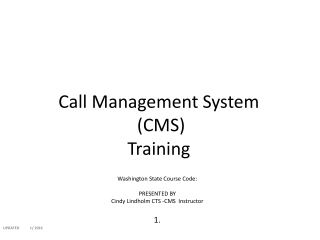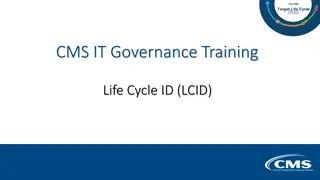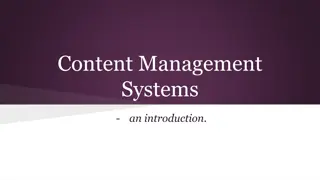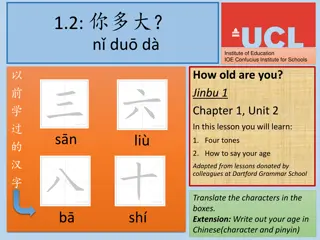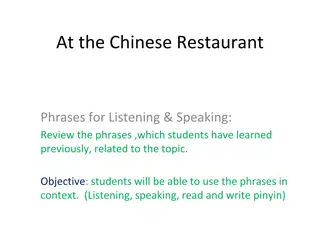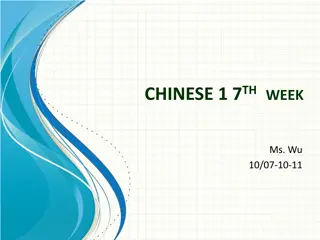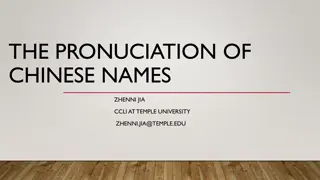
Introduction to Pinyin System for Learning Mandarin
"Explore the Pinyin system in learning Mandarin with a focus on key historical facts, tones, pronunciation, and basic vocabulary. Implementing learner-centered design strategies, the course utilizes multimedia and interactive elements for effective language acquisition."
Download Presentation

Please find below an Image/Link to download the presentation.
The content on the website is provided AS IS for your information and personal use only. It may not be sold, licensed, or shared on other websites without obtaining consent from the author. If you encounter any issues during the download, it is possible that the publisher has removed the file from their server.
You are allowed to download the files provided on this website for personal or commercial use, subject to the condition that they are used lawfully. All files are the property of their respective owners.
The content on the website is provided AS IS for your information and personal use only. It may not be sold, licensed, or shared on other websites without obtaining consent from the author.
E N D
Presentation Transcript
HCI-520: LEARNER-CENTERED DESIGN TERM PROJECT REPORT JOHN JACOBSEN
PROJECT DESCRIPTION Introduction to Pinyin System for learning Mandarin
LEARNING OBJECTIVES [LO1] Remember key facts of Pinyin s History CPD: 1.1- Identify, 2.5- Inferring KD: Aa- Knowledge of terminology, Ba- Knowledge of classifications and categories, Bb- Knowledge of principles and generalizations [LO2] Recall the prominent tones used in Pinyin. CPD: 1.1- Recognizing, 2.3-Classifying, 2.5-Inferring, 4.1-Differentiating KD: Aa- Knowledge of terminology, Ca- Knowledge of subject-specific skills and algorithms [LO3] Identify and produce the five tones used in Pinyin. CPD: 1.2- Recalling, 2.3- Classifying, 2.6-Comparing, 3.1- Executing, 4.1- Differentiating, 6.3- Producing KD: Aa- Knowledge of terminology, Ba- Knowledge of classifications and categories, Bb- Knowledge of principles and generalizations, Cc- Knowledge of criteria for determining when to use appropriate procedures, Da- Strategic Knowledge [LO4] Count to five in Pinyin. CPD: 1.2- Recall, 2.5-Inferring, 3.1- Executing, 4.2- Organizing, KD: Aa- Knowledge of terminology, [LO5]Analyze simple greetings and identify an appropriate response. CPD: 1.1- Recognizing, 1.2- Recalling, 2.1- Interpreting, 2.3- Classifying, 2.5- Inferring, 3.1- Executing, 4.2- Organizing, 6.3- Produce KD: Aa- Knowledge of terminology, Ba- Knowledge of classifications and categories, Bb- Knowledge of principles and generalizations, Ca- Knowledge of subject-specific skills and algorithms, Cc- Knowledge of criteria for determining when to use appropriate procedures, Da- Strategic Knowledge
IMPLEMENTATION Graphics/Video Articulate 360(Rise) Pre-test/Post-test Segmented Chunks
APPLICATION OF HCI 520 PRINCIPLES Multimedia Multimedia pictures and video to explain how tones were read, said, and written along with the English letter combinations Contiguity Contiguity text and corresponding graphics near one another Modality Modality Incorporation of videos where a native Mandarin speaker pronounce each word or phrase phonetically.
APPLICATION OF HCI 520 PRINCIPLES Redundancy Redundancy Audio in the videos is not lengthy nor are the text on the videos or graphics My system is an exception due to it being a language program Coherence Coherence No distracting graphics, text, or audio were included in the course The content was concise Personalization Personalization Script was developed to be friendly and welcoming
APPLICATION OF HCI 520 PRINCIPLES Segmenting and Pretraining Segmenting and Pretraining The course was broken up into small digestible chunks Learning objectives of the learner were introduced at the beginning of the pre-test and the beginning of the course Practice Practice Course offered videos that the learner could use to practice the pinyin words, phrases, or tones. Flashcards Learner Control Learner Control Learners had full ability to learn at their own pace or review any content that they felt necessary
APPLICATION OF HCI 520 PRINCIPLES Thinking Learners were required to knowledge from lessons in previous sections and incorporate them into learning new content. Encouraged to read new numbers or phrases and apply this knowledge to new situations They were then asked to listen to the correct phonetics of each word or phrase and compare
APPLICATION OF HCI 520 PRINCIPLES Feedback Feedback Video Review Immediate feedback was given during the post-test. Far Transfer Far Transfer Learners can use the tones and lessons they learned in the course and apply them to discovery of new pinyin combinations
EVALUATION 22 participants signed up. 13 completed the course.
EVALUATION Questions Asked Questions Asked Pinyin is used to translate which language?(LO1) What is the phrase in the picture(zao shang hao)? (LO5) How many prominent tones are in Pinyin?(LO2/LO3) What number is this(si)?(LO4) Pinyin is a romanization system. What does this mean?(LO1) Match the numbers. Use the image as reference.(LO4) Match the phrases with the correct letter. Use the image as a reference.(LO5) Which tone is the speaker using(speaker uses tone three)?(LO2/LO3) Who uses pinyin? Select all that apply.(LO1) When did Pinyin become the official system used by China?(LO1) What is being said in this clip(wan an)?(LO5)
EVALUATION Pre-Test Mean 4.08 SD 1.8 Post-Test Mean 7.85 SD 2.41 Effect size of .78 P-Value of .0003
FURTHER RESEARCH/DEVELOPMENT Add additional checkpoints for review Incorporate voice analysis Warning before post-test Incorporation of Mandarin characters Add social competition Make some questions weighted more with partial credit

